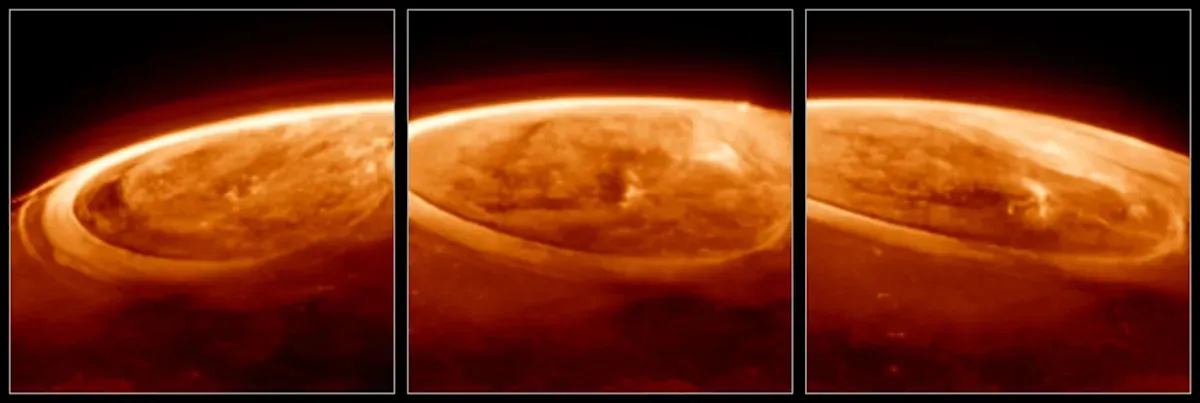
The James Webb Space Telescope, NASA’s groundbreaking successor to the Hubble Space Telescope, has recently unveiled spectacular new images showcasing the auroras at Jupiter’s north pole. These awe-inspiring auroras, triggered by charged particles colliding with Jupiter's atmosphere, are astonishingly hundreds of times brighter than our own Aurora Borealis. For the first time, we can now observe these magnificent phenomena in unprecedented detail, thanks to the advanced capabilities of the Webb telescope.
The auroras we experience on Earth are primarily caused by solar storms, events that occur when charged particles emitted by the Sun collide with our upper atmosphere. This interaction energizes atmospheric gases, producing the distinctive colored glow known as the Northern or Southern Lights. However, recent findings reveal that Jupiter's auroras are influenced by more than just solar activity.
Jupiter's immense magnetic field also plays a critical role by pulling in charged particles from its surroundings. Notably, this includes particles ejected from volcanic eruptions on Io, one of Jupiter's moons. As a result, the giant planet boasts a far more intricate auroral system compared to Earth, showcasing the complexity of its atmospheric interactions.
The NIRCam (Near-Infrared Camera) aboard the James Webb Space Telescope has a high sensitivity that illuminates the rapidly changing features of Jupiter's auroras. Scientists have successfully observed details and bright spots that were previously undetectable with the Hubble Space Telescope. Jonathan Nichols, the lead researcher from the UK’s University of Leicester, expressed his excitement over the telescope's findings, describing the experience as “What a Christmas present it was — it just blew me away!”
In their analysis, researchers anticipated that Jupiter's auroras would fade in and out slowly, perhaps over a period of fifteen minutes. To their surprise, they found the entire auroral region to be vibrant and dynamic, "fizzing and popping with light," with variations occurring almost every second. This revelation adds a new layer of understanding to how auroras function on Jupiter.
The research team conducted simultaneous observations of the auroras using both the Hubble and Webb telescopes, allowing for a direct comparison of Ultraviolet and Near-Infrared images. The results highlighted that the James Webb Space Telescope captured intricate details and nuances that Hubble missed, further demonstrating the advanced capabilities of the newer telescope.
These groundbreaking observations not only deepen our understanding of Jupiter's auroras but also raise important questions about the planet's magnetic field and its atmospheric dynamics. Researchers are hopeful that these findings will contribute to a better understanding of how Jupiter heats and cools, providing essential insights into the gas giant's atmosphere. Indeed, these awe-inspiring images represent just one significant step in unraveling the mysteries of the largest planet in our solar system.